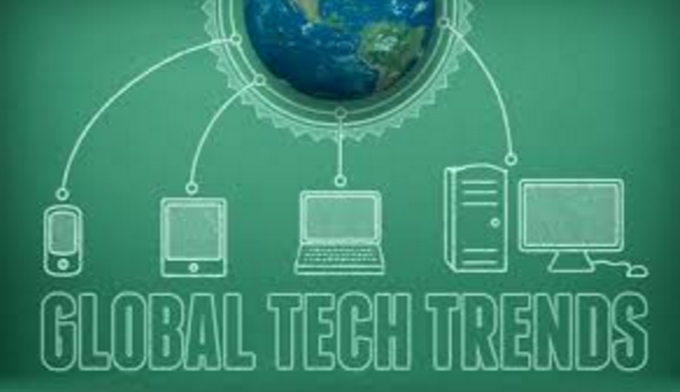
For years technology felt like it was getting simpler. Devices expanded in scope and cannibalised each other. Phones, tablets and TVs replaced a wide array of items we once owned. Recently, however, we have seen an explosion of screens, devices, systems and platforms. We categorise all this complexity under four main themes.
Immersive media
Screens are proliferating around us, while getting closer to us, more personal and more immersive. Virtual Reality, Augmented Reality and Mixed Reality technologies are blending the physical and digital worlds around us.
We need to stop thinking about media in terms of single-purpose devices. Instead, think of the internet as fast, omnipresent and reliable, where devices and media are merging and presenting different layers of digital reality.
New interactions and behaviours
Until now most digital designs have replicated pre-digital thinking: newspapers became websites, catalogues became e-commerce sites, and directories became search pages. Now, however, natural interfaces promise to revolutionise our digital interactions.
Touch-sensitive and responsive ‘haptic’ technologies are becoming widespread, as is voice interaction. We now need to consider whether customers are ready to control all their devices by waving at or talking to them. If this is too much, how about bypassing this entire step of UI and move to direct brain control? We’re now starting to see TV sets that respond directly to thoughts, for example.
Digital intimacy
Technology is getting closer to us in two different ways. We have seen the emergence of robots as companions, whose main role is to provide company and assist rather than undertake hard physical labour. Robots have dialled up cuteness and personality like never before. At the same time wearables have become smaller and more personal than ever. Our personal devices are recording, sharing and analysing our heartbeats, moods, location, stress levels, calendars and search activity, arming us with the best data we’ve ever had.
Smarter systems, dumber devices
Hardware makers are focusing on improving their products by adding smartness, which is now more often embedded in software or cloud-based services instead of hardware. This means that these products can be continually updated and improved rather than relegated to obsolescence.
Makers of products should start to focus on the solutions they provide. Tesla doesn’t make cars, it sells mobility; Sonos isn’t a speaker, it provides access to the seamless world of music; American Express Platinum is more about airline lounges than payment. Brands should think about the role they play in their customers’ lives, and how they can use smartness and AI to best play it better.
Source:Zenith Media


